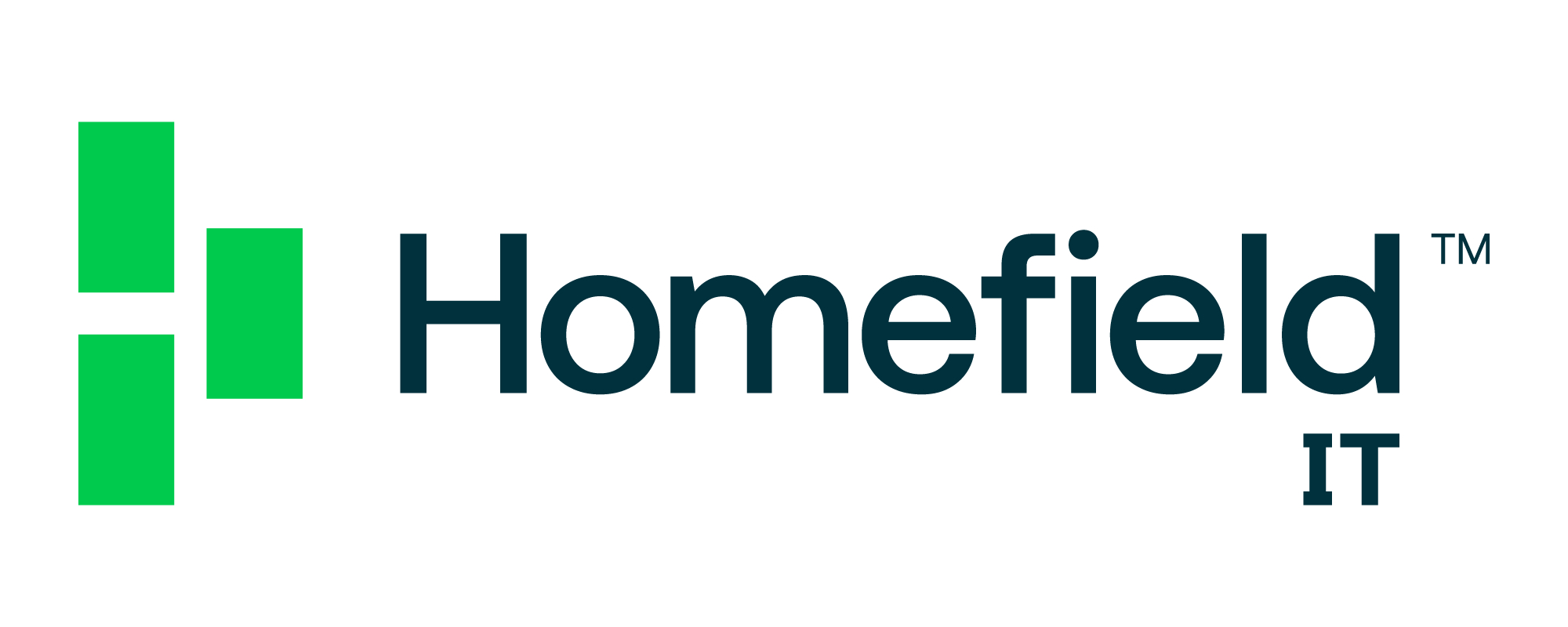Cloud ServicesBusiness IntelligenceIT Consulting & StrategySecuritySoftware DevelopmentTech Support & Managed IT ServicesTelecommunicationsHealthcareConstructionEducationFinanceLegalNon-ProfitsReal EstateStartups
One of the biggest challenges for companies when it comes to adopting new technology is getting buy-in from the top. You know new systems could dramatically improve business, but demonstrating the value – the return on investment (ROI) – of new tech investments is hard.
If you look at any list of barriers to adopting new tech and cost is almost always at the top of the list. That’s why it’s important to have a system in place to help you prove the ROI of any investment you plan to make. ROI is how you justify spending money on new tech, especially if the old tech still works just fine. The old adage, “If it ain’t broke, don’t fix it,” may have been true once upon a time, but the reality is if you’re still relying on old or outdated tech to run your business, you’re not planning to stay in business for long.
One of the big things that need to happen is people need to stop looking at tech as money spent, but rather as an investment that makes them money. That shift in mindset can reduce the push back you get when you’re trying to invest in your business.

Why you need to measure the ROI of IT
Understanding the ROI of IT helps businesses figure out whether a certain piece of technology or software program is worth investing in (i.e.; Do you really NEED invoicing software or does it make sense to continue to create invoices manually?).
Beyond that, understanding your ROI lets you look back on purchases to see whether they lived up to the hype, so to speak. If you did invest in that invoicing software, and three months later it still takes the accounting team the same amount of time to produce invoices, it likely wasn’t a worthwhile investment.
Knowing your tech ROI also gives you a way to justify your budget at the time you’re setting it (and helps you ask for more money). It shows your managers you understand what you’re spending dollars on, and you can justify the expense based on specific needs.
How to calculate the ROI of your tech investments
Calculating ROI is pretty straightforward. You can use a formula that looks something like this: ROI = (Gains – Cost)/Cost * 100. There are a few different formulae you can choose from but you’re simply trying to establish a baseline that compares how much money you’re saving, compared to the cost of the technology you’re investing in.
While the above formula is great, it doesn’t reveal the true ROI of the product. It just shows cost savings. When you’re trying to demonstrate the real value of something, you have to go beyond cost.
That’s why it’s a good idea to ask yourself questions when you’re thinking about the ROI of a piece of tech. Questions like:
- Why do we need this technology investment?
- What are we trying to achieve with this investment?
- How will it make our business better, more efficient, or more secure?
These questions help you assess the motivation beyond the purchase. For example, if the answer to the first question is, “Because government or industry regulations require us to,” then you know you’re not doing this because you want to, but because you have to. It’s a matter of staying compliant. In this case, you don’t have to worry about the justification as much because you don’t have a choice (and because not doing so could result in massive fines).
However, if your response to that first question is, “Because we want to spend less time and money on invoicing,” then you need to spend a bit more time understanding the true value of the purchase.
Luckily, there are a handful of areas where you’re going to see a definite ROI when it comes to tech investments.
- Revenue enhancements – Will this piece of tech allow you to explore new revenue streams? Does it make it possible for you to offer new products or services to your customers? This is especially important if your customers have been asking for new products and services. For example, if investing in a custom software platform lets you offer new services customers have been asking for, you balance the cost of providing the service, versus expected revenue. If it costs $50,000 to make the custom platform, but you can sell it to customers for $200 a month per customer, it will pay for itself pretty quickly. Assuming you’re able to get 30 new customers signed up for a full year, the equation looks like this: ROI = (72,000 – 50,000)/50,000 * 100. With this, you get an ROI of 44%, which is a lot of money back on your investments.
- Cost reduction – Does investing in new tech make it cheaper for you to run your business? Cheaper server space on the cloud, for example? Using that as an example, if you’re able to free up $25,000 a year by switching to a cloud solution that costs $15,000 a year, your ROI is an estimated 67% – (25,000 – 15,000)/ 15,000 * 100 = 67.
- Cost avoidance – Unlike cost reduction, cost avoidance means avoiding paying for something you don’t need. Let’s say human errors are costing your company around $35,000 a year in terms of lost time, rework, or billing errors. To stop this, you implement an automated invoicing solution that removes people from the process and costs $150 a month: ROI = (3,000 – 35,000)/35,000 * 100. Your ROI works out to a little over 99% because you’re saving tens of thousands of dollars by spending a few thousand per year.
- Increased productivity – Technology that increases productivity in your business is never a bad thing. Maybe it’s a piece of software that turns an 8-hour task into a 15-minute task – manual invoicing, anyone? Or maybe it’s something that removes people from the task entirely. If an 8-hour task involves one employee who makes $100/hour and it’s something they must do twice a week, you’re spending $6,400 a month on it. A solution that automates the process for $200 a month might give the following ROI: (6,400-200)/200 * 100. Your ROI is 3,100% because you’re reducing a $6,400 expense down to a $200 expense, and you’re freeing up 32 hours a month, meaning that employees can further push the ROI by focusing on high-value tasks that grow your business. Even if there is a bit of manual intervention required, you’re still coming out on top.
- Better flexibility – As we’ve learned over the last year, adaptability can make or break your business. If you don’t have technology in place that makes it possible to shift how you operate, what you offer, or the way you do business quickly, you put yourself in a position to fall behind the competition. This one can be hard to measure because you often don’t know what you’re going to need until you need it. . But, let’s say you have the infrastructure in place to allow employees to work remotely at a cost of $10,000 per month. If something happens to your business anything from a global pandemic to afire) and you suddenly can’t go back into your office for two months, you don’t have to stop working and lose $200,000 in business, you just go remote. For that two-month period, ROI = (200,000 – 20,000)/20,000 * 100. You’re looking at a 9,000% ROI for one incident alone.
- Regulatory compliance – As mentioned above, regulatory compliance means the investment is unavoidable. On the upside, you eliminate the risk of large fines and other repercussions that come from being non-compliant (like a loss of customer trust). It doesn’t matter how much the solution costs, when data breach fines are reaching upwards of $575 million per incident, the ROI is clear.
- Improved security – Another huge value proposition is improved security. Even with a solid security program in place that you’re always monitoring and keeping up to date, a new piece of technology to the mix can improve security by leaps and bounds. Things like virtual private networks (VPNs) that let employees safely connect to secure networks from remote locations can make working from home safer. Password tools that promote good password practices in employees (by removing them from the process) are another way you can improve security beyond the standard best practices. Like compliance, the ROI here is more focused on the fines you’re not paying. If a $1,000 per month security solution prevents even one multi-million dollar fine, it’s paying for itself.
The more of these value areas you can identify when you’re investing in a new piece of tech, the better. Each one helps you demonstrate where you’re adding value to your business, and makes it easier to get buy-in from the CEO.
![]()
Need help to discover the true value of the tech you need?
The biggest challenge when establishing ROI for new tech is by understanding how it can help.
It can be easy to see the obvious connections (reduces spend by XX%), but if you need to see the true value, you sometimes have to really know the technology you’re investing in. But, with technology changing as fast as it is these days, it can be very easy to get lost in the weeds when you’re looking for new solutions for your business.
That’s where having a managed services provider (MSP) like Manhattan Tech Services (MTS), as your strategic tech partner can help. We employ strategists and technology experts across multiple industries who dedicate their time to staying up to date on the newest tech and how it can help your business.
If you’re ready to explore the ROI on your next big tech investment, contact us today.
SEE MORE
Kaytuso – the cybersecurity & regulatory compliance division of ManhattanTechSupport.com LLC.
Exceed Digital – the custom software development and business intelligence solutions division of ManhattanTechSupport.com LLC
 March 29, 2021
March 29, 2021 Manhattan Tech Support
Manhattan Tech Support




